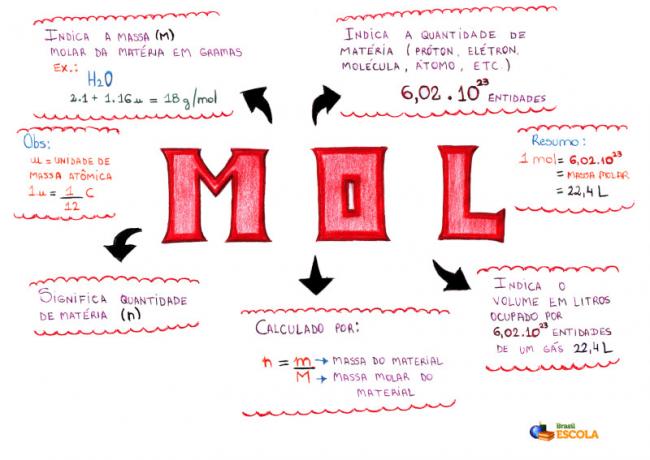O Van’t Hoff Factor (i) is used to calculate and analyze the colligative effects (Change of physical properties - such as melting and boiling temperature - of solvents, when adding a non-volatile solute) in ionic solutions.
In molecular solutions, the amount of dissolved molecules is the same as added molecules. For example, if we add 100 sugar molecules (C12H22O11) in water, 100 molecules will be dissolved exactly.
In ionic solutions, however, this value varies as the molecules undergo ionic dissociation (or ionization). An example is a solution of sodium chloride (NaCl – table salt). If 1 mole of NaCl is added to the water, we will end up with 1 mole of Na+ particles and 1 mole of Cl- particles, as shown in the salt ionization equation below:
NaCl → Na+(here) + Cl-(here)
1 mol → 1 mol + 1 mol } 2 mols
This number of final particles can also triple, and so on, depending on the salt used. Thus, the relation made between the total number of final particles in relation to the initial ones in the ionic solutions is the Van’t Hoff factor (i):
i = _total number of final particles____
total number of starting particles
Thus, in the example given above, we have that the Van’t Hoff factor is 2, because:
Do not stop now... There's more after the advertising ;)
i = 2mol = 2. 6,02. 1023 particles = 2
1mol 1. 6,02. 1023 particles
It can then be inferred that to calculate the value of i we must analyze two factors:
1. Degree of dissociation or ionization (α)
2. Number of ions generated, represented by the letter q
If the degree is 100% (α = 1), the Van’t Hoff factor is equal to the number of ions generated. However, if the degree of dissociation is less than 100% (or α < 1), the calculation must be done to find the value of i. Let's look at the following case of an HCl solution:
HCl → H+ + Cl-
In the beginning } 100 molecules → zero + zero
95% of molecules ionized } 95 molecules → 95 H ions+ + 95 Cl ions-
In the end we will have } 100-95= 5 molecules of HCl → 95 H ions+ + 95 Cl ions-
Thus, the calculation of the Van’t Hoff factor is given by:
i = 95 + 95 + 5 → i = 1.95
100
The reasoning used above can be expressed mathematically by the formula:
i = 1 + α. (q - 1)
By Jennifer Fogaça
Graduated in Chemistry
Would you like to reference this text in a school or academic work? Look:
FOGAÇA, Jennifer Rocha Vargas. "Van’t Hoff Factor"; Brazil School. Available in: https://brasilescola.uol.com.br/quimica/fator-vant-hoff.htm. Accessed on June 28, 2021.



